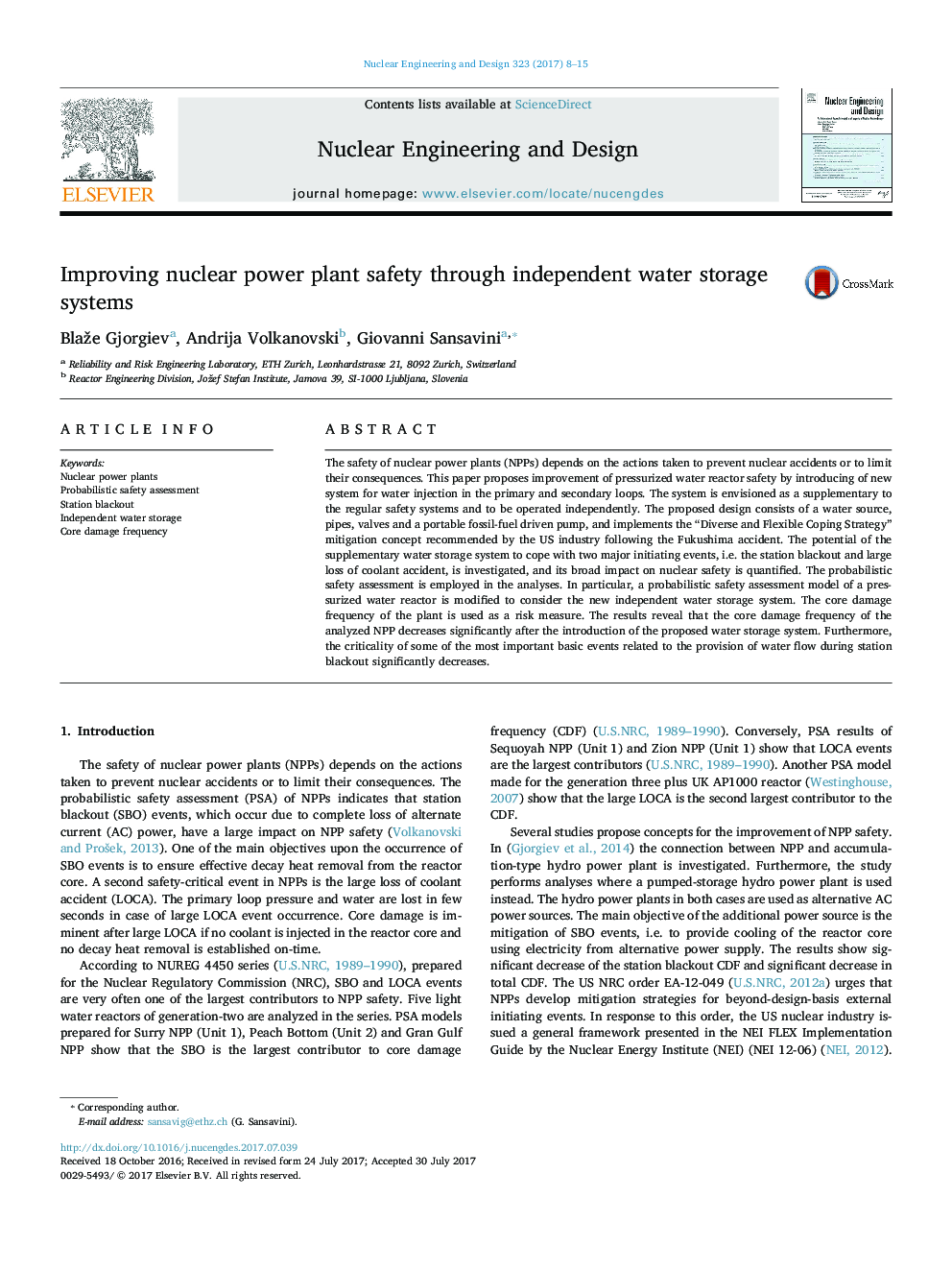| Article ID | Journal | Published Year | Pages | File Type |
|---|---|---|---|---|
| 4925446 | Nuclear Engineering and Design | 2017 | 8 Pages |
Abstract
The safety of nuclear power plants (NPPs) depends on the actions taken to prevent nuclear accidents or to limit their consequences. This paper proposes improvement of pressurized water reactor safety by introducing of new system for water injection in the primary and secondary loops. The system is envisioned as a supplementary to the regular safety systems and to be operated independently. The proposed design consists of a water source, pipes, valves and a portable fossil-fuel driven pump, and implements the “Diverse and Flexible Coping Strategy” mitigation concept recommended by the US industry following the Fukushima accident. The potential of the supplementary water storage system to cope with two major initiating events, i.e. the station blackout and large loss of coolant accident, is investigated, and its broad impact on nuclear safety is quantified. The probabilistic safety assessment is employed in the analyses. In particular, a probabilistic safety assessment model of a pressurized water reactor is modified to consider the new independent water storage system. The core damage frequency of the plant is used as a risk measure. The results reveal that the core damage frequency of the analyzed NPP decreases significantly after the introduction of the proposed water storage system. Furthermore, the criticality of some of the most important basic events related to the provision of water flow during station blackout significantly decreases.
Related Topics
Physical Sciences and Engineering
Energy
Energy Engineering and Power Technology
Authors
Blaže Gjorgiev, Andrija Volkanovski, Giovanni Sansavini,
